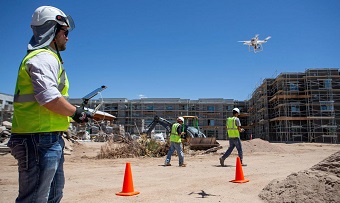 Tuesday, September 24, 2024
Tuesday, September 24, 2024  Tuesday, September 24, 2024
Tuesday, September 24, 2024 
As reported on Tucson.com, drone painters, robot masons and bionic workers may one day be a common sight on construction sites.
Advances in artificial intelligence, coupled with an ongoing labor shortage, have construction companies looking for options to the traditional laborer.
Job titles such as robotics technician and virtual construction supervisor are now listed on recruiting sites.
And the University of Arizona is looking to add classes on these technical advances to its civil engineering program.
The construction field is one of the least-digitized industries, according to a report by McKinsey Global Institute.
Tucson-based Sundt Construction Inc. has 15 drones working in fleets across Arizona, Texas and California that are tasked with capturing photo documentation and mapping data.
For example, when building on top of a closed landfill, the drone can calculate how much material is being moved at any given moment, giving the client exact information on progress.
Before, someone would be counting the number of trucks coming in and out of the area to estimate progress, not knowing how full each truck might be, explained Eric Cylwik, senior virtual construction engineer for Sundt.
“With the ability to fly these drones we can measure the exact volume of how much material has been moved,” he said. “Then we can compare that surface to the week prior to show the client the progress that’s been made.”
When clients give Sundt plans for their projects, the company can lay drone imaging over the site to identify where pipes and other infrastructure should be placed.
“Before, we took a paper copy of the plans out into the field and used a tape measure, which could take half a day,” Cylwik said. “With the drone it takes about 30 minutes in the field and an hour of computer time, crunching the data.”
Once a building’s exterior is complete, the drone can use its thermal camera to measure temperatures in the building and identify spots where there might be excessive heating or cooling escaping the building — something that was previously reported by the client after the keys were turned over, Cylwik said.